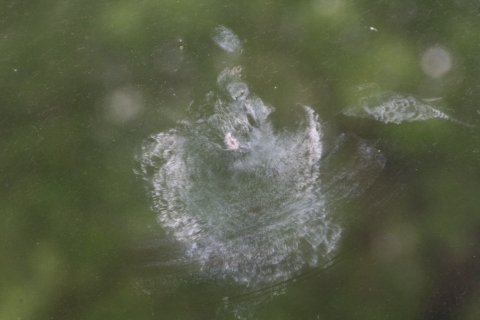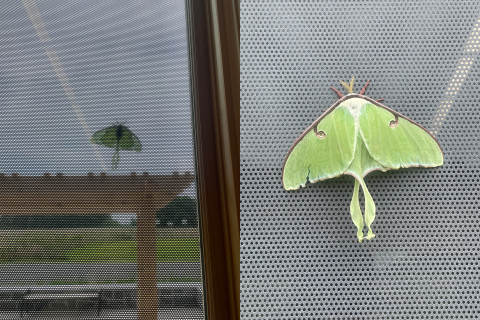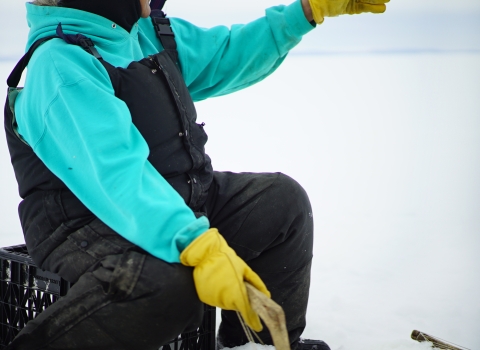It’s Monday morning, about 10 o’clock. Your morning meetings are finished and you’re just getting into your emails. Halfway through one that has your full attention, you’re startled by a loud thud. It scares you a bit. You look towards the window, the source of the sound, and see the dusty outline of a bird.
This occurs hundreds of times daily across the world. Look around buildings and you’ll often see an unconscious or deceased bird lying on the ground.
When birds see a reflective surface, it doesn’t register as a reflection. They see a continuation of habitat, especially if there are trees and shrubs being reflected. They see another bird rather than a reflection of themselves. They fly headlong into the surface as if it weren’t there. Occasionally, the bird is just stunned and recovers; more often, these impacts cause fractures or concussions, and the birds don’t make it.
To help protect our feathered friends, we’re installing bird-safe window treatments on all new buildings and retrofitting existing buildings to be more bird-safe! There are many ways to do this. Most common are decals or window coatings that appear as solid obstacles to birds. This can be as simple as gray dots spaced uniformly across the window surface or as extensive as an opaque film that covers the entire window.
At Bombay Hook National Wildlife Refuge, the windows to the recently constructed visitor center have been completely covered with a film that allows people inside to see out but appears solid from the outside. This lets visitors appreciate the view of the refuge while presenting what appears to be a solid barrier to birds. This type of window treatment has the added benefit of reducing UV light transmission into the building, thus reducing cooling costs in the summertime.
In addition to window treatments, other bird-safety measures include reduced external lighting and timed interior lights. Lights can disorient migrating birds or those seeking shelter from weather. At the refuge visitor center, a buffer was created to keep vegetation away from the building and cut down on reflections. Similar features will be part of new construction at Prime Hook National Wildlife Refuge, Bombay Hook’s sister refuge to the south.
“Early in my career, I experienced the death of a belted kingfisher that had crashed into reflective windows at one of our visitor centers” says Kate Toniolo, project leader for Bombay Hook and Prime Hook national wildlife refuges. “Holding it as it took its last breath had a profound effect on me, but unfortunately at the time there weren’t a lot of commercially available options to prevent strikes. It’s fantastic to see how far we’ve come and to know that the Service is ensuring that bird-strike preventatives are automatically included in new construction.”
As a worldwide leader in wildlife conservation, it’s our duty and privilege to protect birds for the benefit of future generations. Learn more about how you can implement bird-friendly initiatives and come visit us at Bombay Hook!






